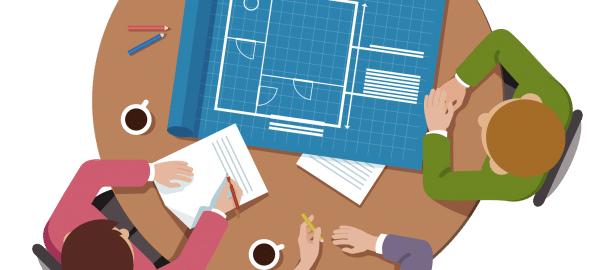‘There’s an app for that’ was Apple’s battle cry in their 2009 advert, and we scoffed at the idea that an app could do anything more than remind us when the last episode of ER was being shown or allow Mr Pacman to cheer up a dreary train ride. 10 years later, are apps literally defining the build of our landscape?
If you’re an architect, you may have spent time online scouring the web for useful tools to make life easier, maybe you’re already using online accounting apps like Xero or Quickbooks? Here is a selection of some of the more interesting software we found that might be useful for architects:
- A360. This was created by CAD experts Autodesk, but this app lets you upload 2D and 3D drawings regardless of what software you used to make them. This app means that these drawings are available on your phone no matter where you are, so you can review them, mark changes or observations, track the project’s progress and find your way around models of all sizes.
- Concepts. This app isn’t just for architects, it can also be used by artists, illustrators, product designers and anyone that wants to be able to draw on the go, (but it is ideal for architects!) It’s a digital sketch pad for professionals that enables them to draw exceptionally accurately with 64 bit precision. With a 4.7 star rating, this is a popular choice!
- Scala Architectural Scale. Despite the name, it is designed for both architects and engineers and it enables you to measure printed drawings both on the move and in your office. It has both fixed and variable scales so whether you know the scale or not you can still use it. There is a free version with 18 fixed scales, but you can expand the range with a paid-for upgrade.
- RoomScan Pro. Great for smaller projects or improvement projects, this app allows you to mock-up the layout of a room very quickly just by waving your phone around the room believe it or not. It even lets you draw out features such as stairs, exteriors and gardens.
- Mosaic. Of course, we couldn’t leave out our own CDM app! Mosaic app for construction professionals takes some of the sting out of the new initiative to get architects into the role of principal designer. Mosaic can help users feel confident in their CDM work, as it gives frameworks to use and not just the template-based resources currently available elsewhere. The key to this app is that it helps architects, who perhaps feel their CDM experience isn’t going to be sufficient to avoid potential prosecution, feel more secure in their work. The architects using Mosaic have declared they will be happy to take on more revenue-generating CDM work in the future, having started using our software.
Apps in architecture defining the landscape
These are only a handful of the myriad apps available online and offline, and with new technology opening up including the growth of AI and virtual reality as well as cloud-based tools, and the increased phasing out of the dreaded paper-based record keeping, in the future whole buildings could literally be designed by app alone. Architectural technology is a discipline that spans architecture, building science, design and engineering.
In practice, architectural technology is developed, understood and integrated into a building by producing technical architectural drawings, quantities, measurements and schedules. Computer software is now used on all simplest building types and methods, for the better. New breeds of architects perpetually innovate – while keeping an eye on the heritage of the past – to evolve their craft. For example, Guangzhou Opera House, designed by Zaha Hadid, is a suitably theatrical spectacle for the modern world, held together with joints built using medieval techniques, a fine blend of the past and the future! This level of asymmetry would not have been possible to achieve without modern modelling software and the architect’s vision!
The adoption of technology in architectural practice has undoubtedly allowed this creativity to be more easily achieved, but it has also enabled the industry to extend its business proposition far beyond its traditional remit of design and construction.


